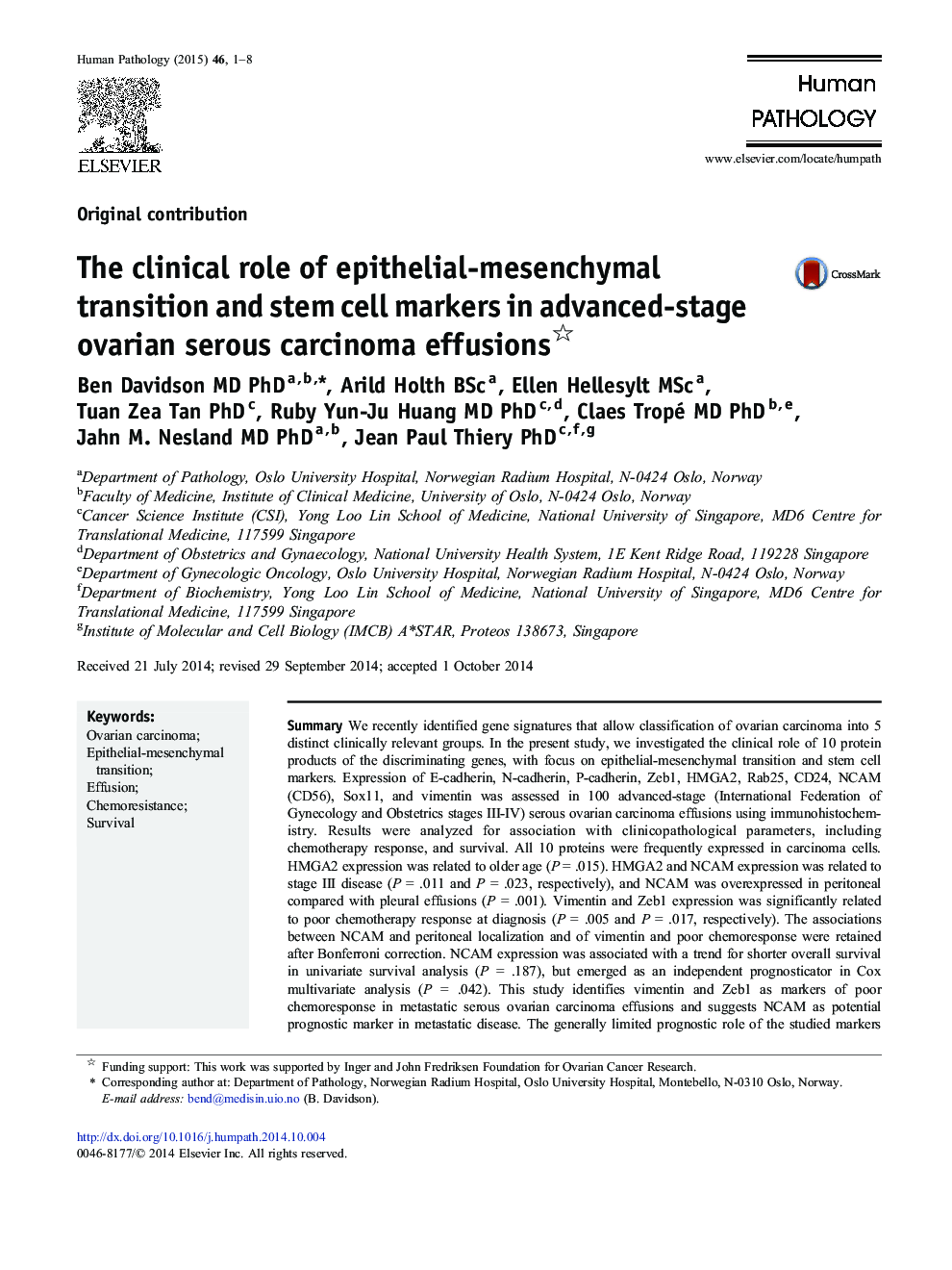| کد مقاله | کد نشریه | سال انتشار | مقاله انگلیسی | نسخه تمام متن |
|---|---|---|---|---|
| 6215577 | 1271392 | 2015 | 8 صفحه PDF | دانلود رایگان |

SummaryWe recently identified gene signatures that allow classification of ovarian carcinoma into 5 distinct clinically relevant groups. In the present study, we investigated the clinical role of 10 protein products of the discriminating genes, with focus on epithelial-mesenchymal transition and stem cell markers. Expression of E-cadherin, N-cadherin, P-cadherin, Zeb1, HMGA2, Rab25, CD24, NCAM (CD56), Sox11, and vimentin was assessed in 100 advanced-stage (International Federation of Gynecology and Obstetrics stages III-IV) serous ovarian carcinoma effusions using immunohistochemistry. Results were analyzed for association with clinicopathological parameters, including chemotherapy response, and survival. All 10 proteins were frequently expressed in carcinoma cells. HMGA2 expression was related to older age (P = .015). HMGA2 and NCAM expression was related to stage III disease (P = .011 and P = .023, respectively), and NCAM was overexpressed in peritoneal compared with pleural effusions (P = .001). Vimentin and Zeb1 expression was significantly related to poor chemotherapy response at diagnosis (P = .005 and P = .017, respectively). The associations between NCAM and peritoneal localization and of vimentin and poor chemoresponse were retained after Bonferroni correction. NCAM expression was associated with a trend for shorter overall survival in univariate survival analysis (P = .187), but emerged as an independent prognosticator in Cox multivariate analysis (P = .042). This study identifies vimentin and Zeb1 as markers of poor chemoresponse in metastatic serous ovarian carcinoma effusions and suggests NCAM as potential prognostic marker in metastatic disease. The generally limited prognostic role of the studied markers emphasizes the difficulty in applying data obtained in studies of primary ovarian carcinomas to analyses of ovarian carcinoma effusions, reflecting the unique biology of the latter.
Journal: Human Pathology - Volume 46, Issue 1, January 2015, Pages 1-8